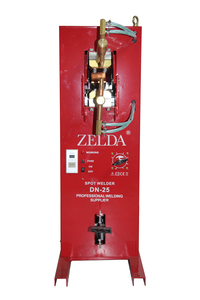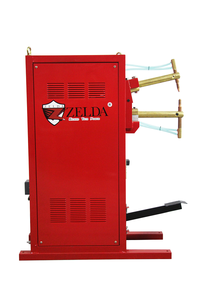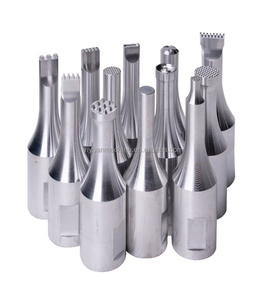(14755 products available)




















































































































































































metal spot welder are essential tools in the realm of welding, particularly when precision and efficiency are paramount. These specialized devices are designed to create welds at specific points, making them ideal for applications that require localized bonding. Unlike other welding methods, metal spot welder offer the advantage of focusing heat and pressure on a small area, providing a clean and robust connection without affecting surrounding materials. This precise approach is particularly beneficial in manufacturing processes where the integrity of the entire structure must be maintained. As technology advances, metal spot welder continue to evolve, incorporating new features and capabilities that enhance their performance and adaptability across various industries.
There are several types of metal spot welder available, each designed to meet specific industrial needs. The most common are pneumatic spot welders, manual spot welders, and robotic spot welders. Pneumatic spot welders utilize compressed air to apply pressure, ensuring consistent and reliable welds, making them suitable for high-volume production environments. Manual spot welders offer greater flexibility and control, ideal for smaller operations or applications where precision is crucial. Robotic spot welders, on the other hand, integrate automation into the welding process, significantly increasing efficiency and accuracy, especially in large-scale manufacturing. Each type of metal spot welder is engineered to optimize performance, catering to the diverse requirements of different sectors.
The primary function of metal spot welder is to join metal components at specific points using heat generated by electrical resistance. This method is highly efficient, allowing for quick and strong welds without the need for additional materials. Key features of modern metal spot welder include digital controls, adjustable timers, and pressure settings, which enable precise regulation of the welding process. Advanced models may also offer programmable sequences and data logging capabilities, facilitating quality control and process optimization. The compact design of many metal spot welder allows for easy integration into existing production lines, enhancing their versatility and utility in various manufacturing settings.
Spot welding is primarily used on metals such as steel and aluminum, which possess the necessary electrical conductivity and melting point characteristics. metal spot welder effectively bond these materials by applying heat and pressure to melt and fuse the metal surfaces. The choice of material impacts the welding process, with factors like thickness and composition playing crucial roles in determining the ideal settings for metal spot welder. High-carbon steels, for instance, may require adjustments in time and pressure to achieve optimal welds. The ability to work with different metals makes metal spot welder invaluable in industries ranging from automotive to aerospace, where diverse material specifications are common.
To maximize the efficiency and quality of metal spot welder, proper usage and maintenance are essential. Operators must ensure that the metal surfaces are clean and free from contaminants, as impurities can compromise the integrity of the weld. Selecting the appropriate settings for time, pressure, and current based on the material and thickness is crucial for achieving strong and reliable joints. Regular maintenance of metal spot welder, including inspection of electrodes and cleaning of contact surfaces, helps maintain performance and prolongs the lifespan of the equipment. Additionally, training operators on best practices and safety protocols is vital to ensure consistent results and minimize risks associated with welding operations.
Choosing the right metal spot welder for your specific needs requires careful consideration of several factors. First, assess the type of material you will be working with, as different metal spot welder models may be better suited for certain metals, like steel or aluminum. It's important to evaluate the thickness and composition of the materials to ensure the metal spot welder can deliver the necessary heat and pressure for optimal welding results. Additionally, consider the production volume and whether manual, pneumatic, or robotic metal spot welder will best fit your operation's scale and efficiency requirements.
Another critical aspect is the power source and capacity of the metal spot welder. Depending on your application's demands, you may require a high-power model for thicker materials or a more compact version for smaller, precision tasks. The availability of advanced features such as digital controls, programmable settings, and data logging can greatly enhance the performance and adaptability of the metal spot welder. Ease of integration into existing production lines and the ability to handle diverse welding tasks are also key considerations when selecting the appropriate equipment.
Robotic metal spot welder offer significant advantages in terms of efficiency and precision. They can perform repetitive welding tasks with consistent accuracy, reducing human error and increasing production speed. Automation allows for better quality control and the ability to handle complex welding sequences, making robotic metal spot welder ideal for large-scale manufacturing environments.
While metal spot welder are primarily designed for metal welding, some advanced models may have the capability to work with specific non-metal materials that possess conductive properties. However, these applications are less common and typically require specialized equipment adjustments to accommodate the different thermal and conductive characteristics of non-metal materials.
Regular maintenance of metal spot welder is crucial to ensure optimal performance and longevity. This includes inspecting electrodes, cleaning contact surfaces, and checking electrical connections. It's also important to calibrate settings and replace worn components as needed. Proper maintenance helps prevent downtime and ensures consistent welding quality.
Safety features in metal spot welder include automatic shut-off mechanisms, protective enclosures, and ergonomic designs that minimize operator risk. Training and adherence to safety protocols are essential to prevent accidents. Manufacturers often provide guidelines and resources to educate operators on safe handling and maintenance practices.
Many modern metal spot welder models are designed with energy efficiency in mind, incorporating features such as adjustable power settings and energy-saving modes. These enhancements help reduce overall energy consumption while maintaining effective welding performance. Selecting the right model for your specific needs can further optimize energy use in your operations.